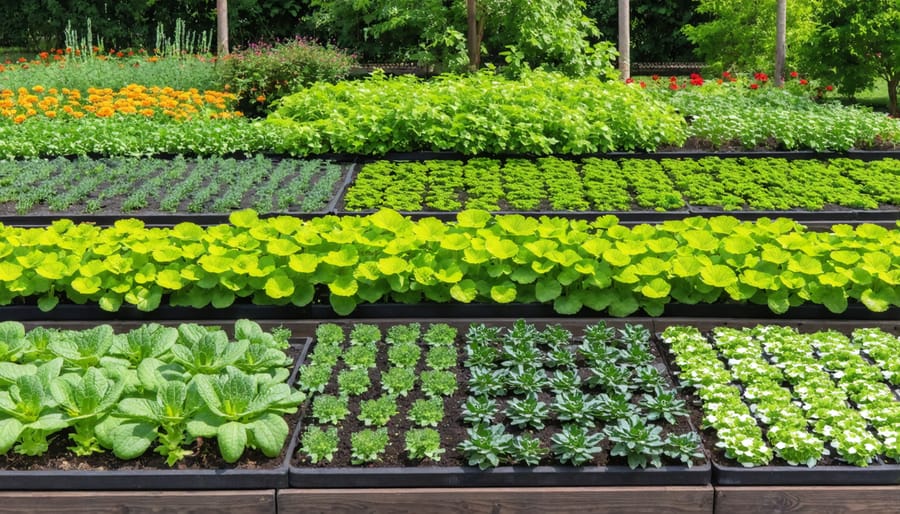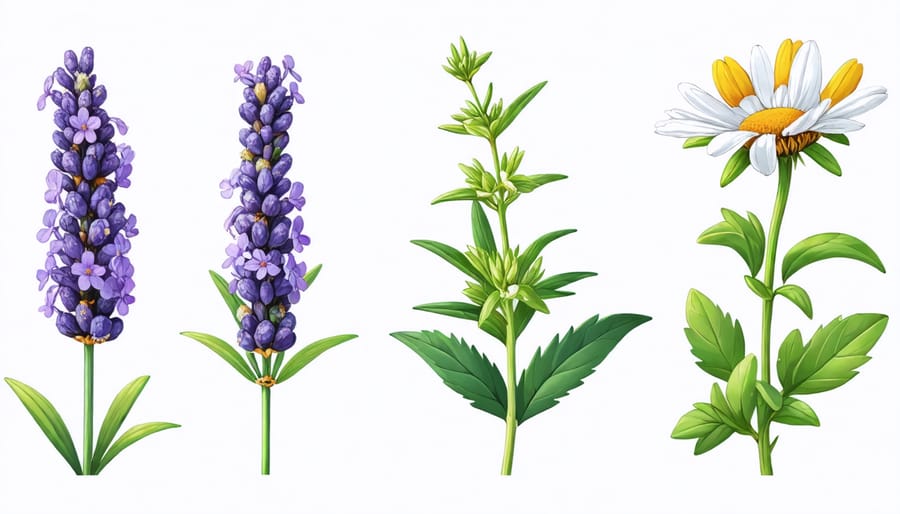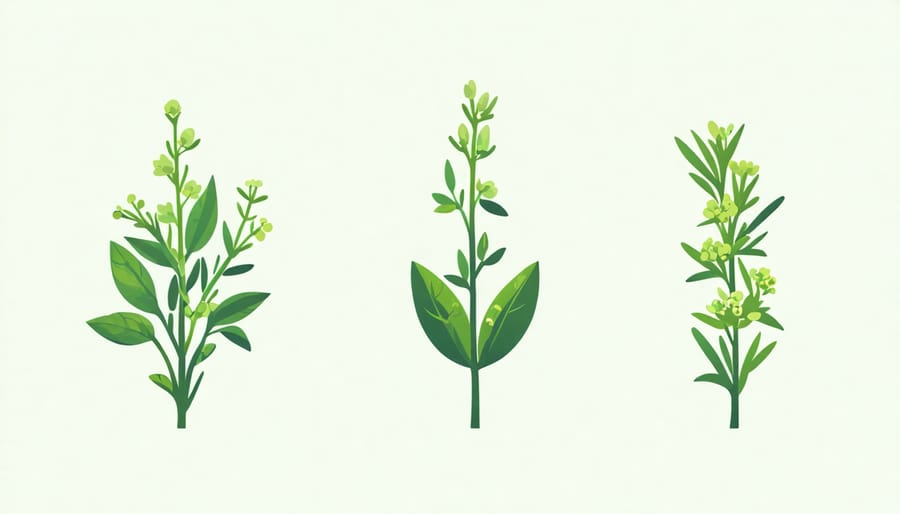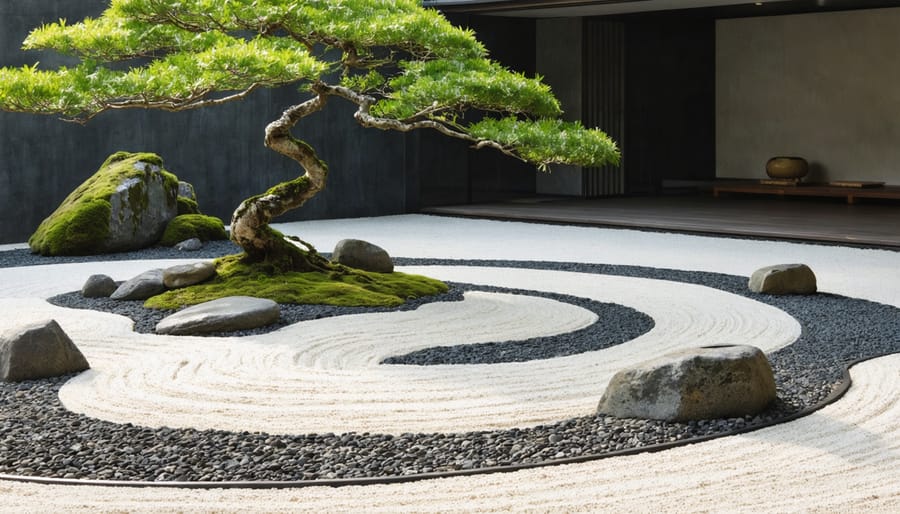Transform your backyard into a natural pharmacy by cultivating time-tested healing plants that have supported human wellness through generations. The historical use of medicinal plants traces back thousands of years, and today, growing these botanical remedies at home combines sustainable living with practical health benefits.
Start with hardy perennials like echinacea for immune support, calming chamomile for sleep, and peppermint for digestive health. These resilient plants thrive in most climate zones and require minimal maintenance while providing year-round access to natural remedies. Position these healing herbs near your kitchen door for easy harvest, and integrate them with existing ornamental gardens to create beautiful, functional spaces that nourish both body and spirit.
Whether you’re an experienced gardener or just beginning your journey into plant medicine, creating a medicinal garden connects you to an ancient tradition of healing while providing accessible, sustainable wellness solutions right outside your door. With basic gardening tools and a few square feet of well-drained soil, you can establish a thriving medicinal garden that serves both practical and aesthetic purposes.
Getting Started with Your Medicinal Garden
Choosing the Right Location
Selecting the perfect spot for your medicinal garden is crucial for the success of your healing plants. As you create a peaceful garden space, consider that most medicinal herbs prefer full sunlight, requiring at least 6 hours of direct sun daily. However, some plants like mint and lemon balm can tolerate partial shade.
Well-draining soil is essential for most medicinal plants to thrive. Before planting, enrich your soil with organic compost to provide necessary nutrients. If your soil is heavy clay, consider raising beds or incorporating sand to improve drainage.
When planning your garden’s layout, remember that some medicinal plants, particularly mints, can spread aggressively. Give these plants their own contained spaces or use barriers to keep them in check. Leave enough room between plants for good air circulation, which helps prevent fungal diseases.
For beginners, start with a small, manageable area near your kitchen door. This makes it convenient to tend to your plants and harvest them fresh when needed. As your confidence grows, you can always expand your garden gradually.

Essential Tools and Materials
To create your medicinal garden, you’ll need a reliable set of tools and materials to ensure success. Start with the basics: a sturdy pair of gardening gloves to protect your hands, and high-quality pruning shears for harvesting herbs and managing plant growth. A garden trowel and spade are essential for planting and transplanting, while a watering can with a gentle spray head helps avoid damaging delicate seedlings.
For soil preparation, you’ll need a garden fork and rake to create the perfect growing environment. Consider investing in several sizes of containers or raised beds if you’re working with limited space. Quality organic potting soil and compost are crucial for nurturing medicinal plants, as is a collection of plant markers to identify different species.
Don’t forget about storage solutions – clean, airtight glass jars for storing dried herbs, and paper bags for the drying process itself. A basic pH testing kit can help monitor soil conditions, while natural pest deterrents and organic fertilizers will keep your plants healthy. For harvesting and processing, sharp scissors, drying racks, and a mortar and pestle are invaluable tools that will serve you well throughout your medicinal gardening journey.

Must-Have Medicinal Plants for Your Garden
Calming and Relaxation Plants
Creating a peaceful sanctuary in your garden starts with incorporating calming and relaxation plants that are known for their soothing properties. Lavender stands out as a star performer, with its gentle purple blooms and distinctive fragrance that’s proven to reduce anxiety and promote better sleep. Plant it along pathways or in containers where you can brush against it to release its calming scent.
Chamomile is another excellent choice for your medicinal garden, offering both beauty and tranquility. Its delicate, daisy-like flowers can be harvested to make a relaxing tea that helps ease tension and promotes restful sleep. This hardy plant thrives in full sun and adds a lovely cottage garden feel to any space.
Lemon balm, a member of the mint family, brings a bright citrusy aroma that’s known to lift spirits while calming nerves. It’s incredibly easy to grow and makes a wonderful addition to teas and aromatherapy blends. Just remember to plant it in containers, as it can spread enthusiastically like its mint cousins.
Other calming additions include passionflower, with its exotic blooms and sedative properties, and valerian, whose roots are traditionally used to promote relaxation. These plants not only create a visually appealing garden space but also provide natural remedies for stress and anxiety. Consider placing these plants near seating areas where you can fully appreciate their calming presence and aromatic benefits.
Immune-Boosting Herbs
Growing immune-boosting herbs in your garden not only adds beauty but also provides natural support for your body’s defense system. Echinacea, with its striking purple flowers, is one of the most renowned immune-strengthening plants. This hardy perennial is easy to grow and can be used to make teas and tinctures, particularly during cold and flu season.
Elderberry is another powerful immune supporter that makes a stunning addition to any medicinal garden. While it requires more space as a shrub, its clusters of dark berries are rich in antioxidants and can be transformed into syrups and elderberry wine. Just remember to always cook elderberries before consuming them.
Don’t overlook the humble oregano, which does double duty as both a culinary herb and an immune booster. This Mediterranean herb contains natural antimicrobial compounds and thrives in sunny, well-drained spots. It’s perfect for container gardening and spreads readily, giving you plenty to harvest.
Other immune-supporting herbs to consider include astragalus, which grows as a lovely climbing vine, and the versatile thyme, which creates beautiful ground cover while offering respiratory support. These plants are generally low-maintenance and can be grown together in a dedicated immune-boosting corner of your garden.
For best results, harvest these herbs on dry mornings after the dew has evaporated but before the day gets too hot. This ensures the highest concentration of beneficial compounds in your plants.
Digestive Health Heroes
When it comes to soothing digestive woes, nature provides some remarkable remedies right in our garden. Peppermint stands out as a true champion, offering quick relief from indigestion and bloating. Its cooling properties make it perfect for brewing into a calming tea, and it’s incredibly easy to grow – though you’ll want to contain it in pots as it spreads enthusiastically!
Ginger, with its warming personality, is another garden superstar. While it requires patience and warm conditions to grow, the reward is worth the wait. Fresh ginger root helps ease nausea, supports healthy digestion, and adds a delightful zing to both culinary dishes and therapeutic teas.
Fennel deserves special mention for its versatility. From its feathery fronds to its bulbous base, every part of this plant offers digestive benefits. The seeds are particularly effective for reducing bloating and calming upset stomachs. As a bonus, fennel’s tall, architectural form adds visual interest to any garden bed.
These digestive heroes work wonderfully together, both in the garden and in your teacup. Try planting them near your kitchen door for easy access when cooking or making remedial teas. Remember to harvest peppermint leaves before flowering for the strongest benefits, dig ginger roots in late fall, and collect fennel seeds when they turn brown in late summer.
First Aid Garden Plants
Every gardener should consider including some first aid plants in their medicinal garden. These versatile plants can help with minor cuts, burns, and skin irritations, making them valuable additions to your natural remedy collection.
Aloe vera is perhaps the most well-known first aid plant, and for good reason. Its clear gel can soothe minor burns, cuts, and sunburns. Growing aloe vera is surprisingly easy – it thrives in bright indirect light and requires minimal watering. Keep one in your kitchen for cooking accidents!
Calendula, with its cheerful orange and yellow flowers, is another must-have. This gentle herb helps heal minor wounds, reduces inflammation, and can be made into a soothing salve for irritated skin. It’s also incredibly easy to grow and will often reseed itself, providing you with a continuous supply.
Yarrow has been used for centuries to stop minor bleeding and help wounds heal. This hardy perennial produces clusters of tiny white flowers and can handle various growing conditions. It’s perfect for both experienced and novice gardeners.
Other valuable first aid plants include plantain, which can help with insect bites and stings, and comfrey, known for its ability to support skin healing. Remember to always research proper usage and consult healthcare professionals before using any medicinal plants.
Growing and Maintaining Your Medicinal Plants
Seasonal Care Guidelines
Maintaining a medicinal garden requires different approaches throughout the year to ensure your healing plants thrive in every season. In spring, focus on soil preparation and adding fresh compost to beds. This is the ideal time to divide perennial medicinal herbs like echinacea and start seeds for annual herbs indoors. Once the last frost has passed, begin hardening off your seedlings before transplanting them outside.
Summer brings increased watering needs, especially for moisture-loving plants like mint and marshmallow. Water deeply in the early morning or evening to prevent leaf scorch. Apply a layer of organic mulch around your plants to retain moisture and suppress weeds. Regular harvesting of herbs encourages bushier growth and prevents flowering in plants like basil and sage.
As autumn approaches, reduce watering gradually and collect seeds from your favorite medicinal plants. This is also the perfect time to dry herbs for winter storage. Before the first frost, consider moving tender perennials like rosemary into containers for indoor overwintering.
Winter care focuses on protecting root systems with additional mulch and covering sensitive plants with row covers or cold frames. For indoor medicinal plants, maintain adequate humidity and provide sufficient light during shorter days. Use this quieter season to plan next year’s garden and research new medicinal varieties to add to your collection.
Common Problems and Solutions
Even the most dedicated gardeners face challenges with their medicinal plants, but don’t let these common gardening misconceptions discourage you. Here are solutions to typical issues you might encounter.
Yellowing leaves often indicate overwatering or nutrient deficiency. For overwatering, ensure proper drainage and adjust your watering schedule. If nutrients are lacking, incorporate organic compost or herb-specific fertilizer into your soil.
Pest problems can be particularly frustrating with medicinal plants. Instead of reaching for chemical pesticides, try companion planting with natural pest deterrents like marigolds or lavender. A simple solution of neem oil and water can also keep unwanted visitors at bay while maintaining your garden’s organic integrity.
Poor growth might result from incorrect sunlight exposure. Most medicinal herbs prefer full sun, but some, like holy basil and mint, can tolerate partial shade. Monitor your plants’ locations and adjust as needed throughout the growing season.
Root rot is another common issue, especially with moisture-sensitive plants like echinacea and sage. Create raised beds or incorporate sand into your soil to improve drainage. Remember that many medicinal plants prefer slightly dry conditions over wet soil.
When plants fail to thrive despite proper care, consider testing your soil pH. Many medicinal plants prefer slightly acidic to neutral soil (6.0-7.0). Add organic matter or specialized amendments to adjust the pH as needed.

Harvesting and Using Your Medicinal Plants
Harvesting medicinal plants at the right time is crucial for maximizing their healing properties. As a general rule, collect leaves in the morning after the dew has dried but before the heat of the day sets in. Flowers are best gathered when they’ve just opened, while roots should typically be harvested in early spring or late fall when the plant’s energy is concentrated there.
Always use clean, sharp scissors or pruning shears to avoid damaging the plants. Never harvest more than one-third of a plant at a time – this ensures it can recover and continue growing. Before collecting any part of a plant, make sure you’ve correctly identified it and that it hasn’t been treated with harmful chemicals.
Once harvested, you have several options for using your medicinal plants. The simplest method is making tea by steeping fresh or dried herbs in hot water. For longer-term storage, dry your herbs by hanging them in bundles in a warm, dark, well-ventilated space. You can also create tinctures by soaking herbs in alcohol, or infuse them in oil for topical applications.
Remember to label everything clearly with the plant name and harvest date. Store dried herbs in airtight containers away from direct sunlight, where they’ll maintain their potency for about a year. Before using any medicinal plants, research proper dosages and potential interactions with medications.
As you embark on your medicinal garden journey, remember that the healing power of gardens extends beyond the plants themselves. While growing medicinal plants can be incredibly rewarding, always practice caution and thorough research before using any plant for therapeutic purposes. Consult with healthcare professionals, especially if you’re taking medications, and never substitute prescribed treatments without proper medical guidance. Start small with well-known, safe varieties, and gradually expand your garden as your knowledge grows. Document your experiences, connect with other medicinal gardeners, and most importantly, enjoy the fulfilling process of nurturing these remarkable plants. With proper care, attention, and respect for safety, your medicinal garden can become a wonderful source of natural wellness for years to come.




